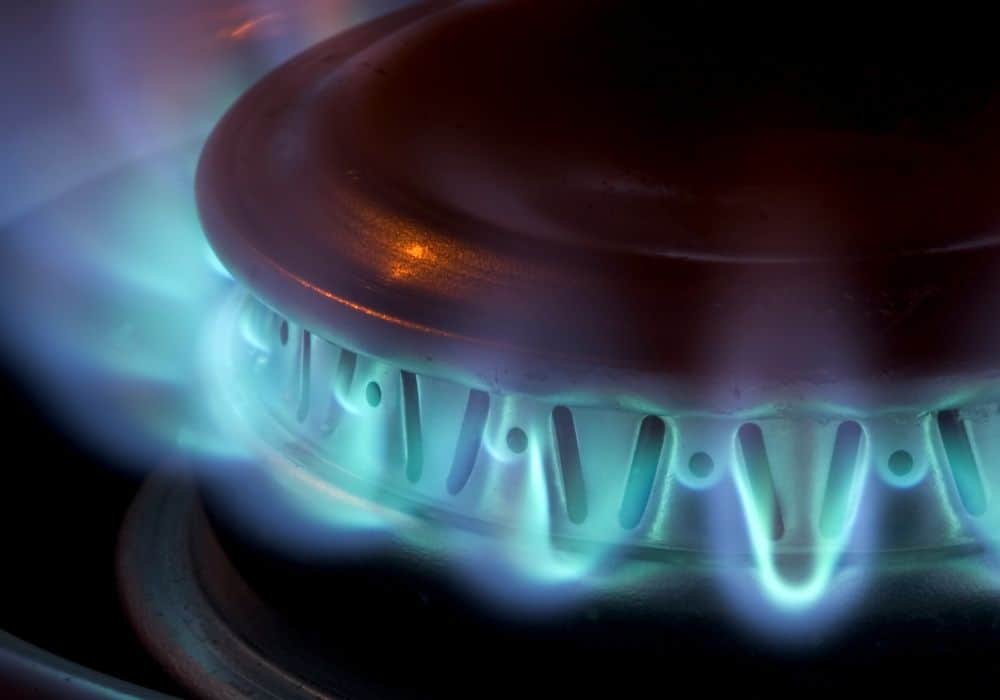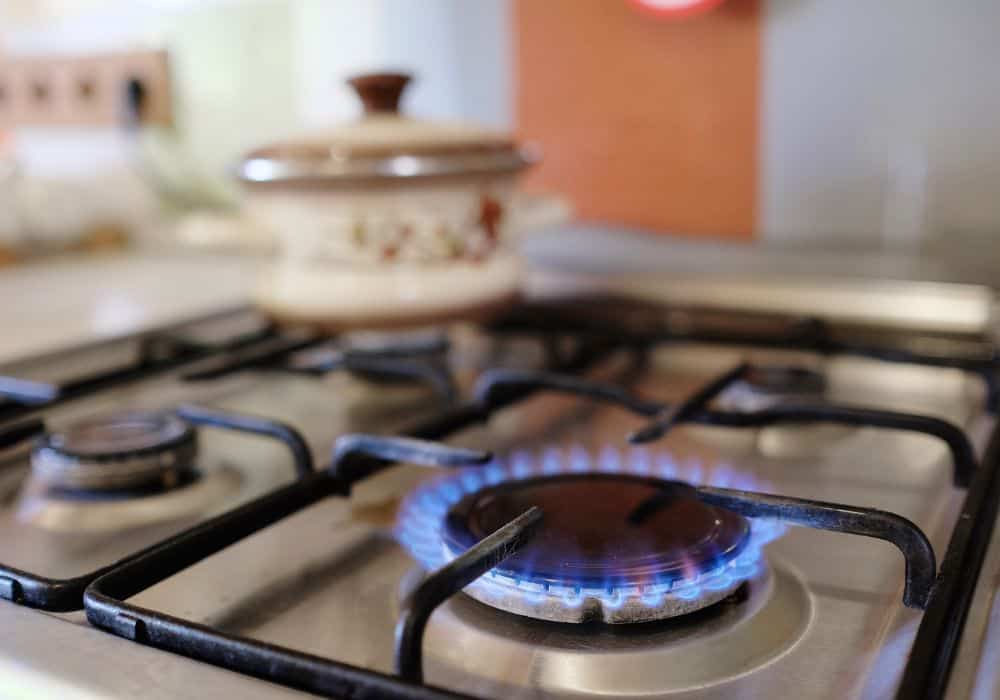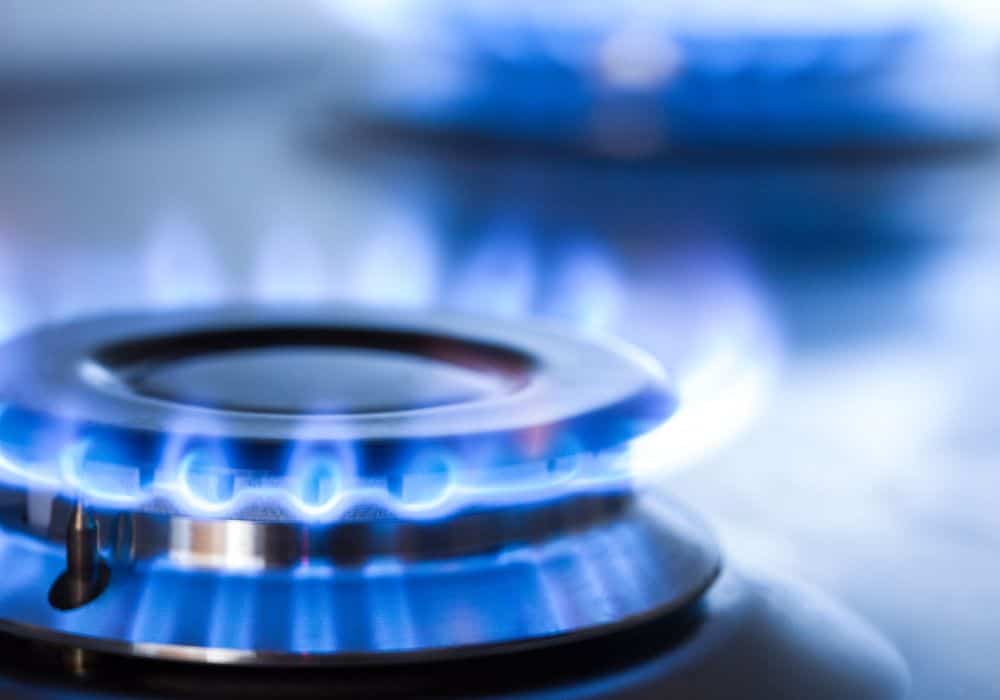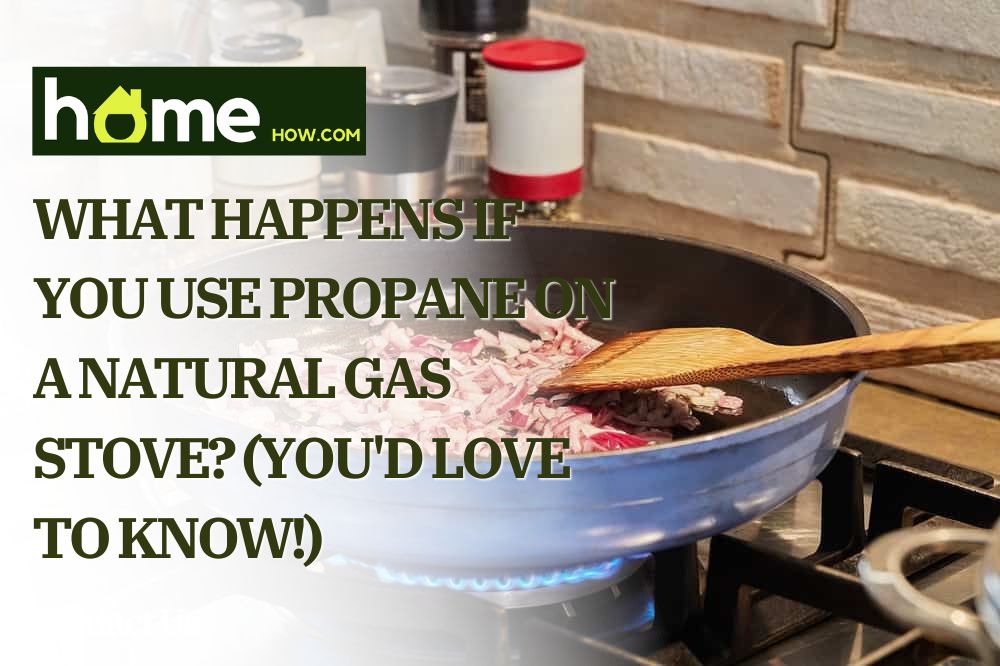Most people rely on stoves for their daily meals. A common stove used in homes is the natural gas stove, fueled by natural gas. However, some people may convert to using propane on a natural gas stove, not realizing their appliance’s potential dangers and consequences.
In this article, we will explore what happens if you use propane on a natural gas stove and the possible risks and consequences of this conversion, as well as the steps on how to do it.
What Happens If You Use a Natural Gas Stove with Propane?
1. Poor Lighting Performance
People may have difficulty lighting a propane stove when using it as a natural gas stove because the two types of gas have different pressure levels and flow rates. Propane has a higher pressure than natural gas. It burns hotter, so if a propane stove is not adjusted correctly for natural gas, it may not light properly or provide adequate heat.
A better option is to use an alcohol lamp or candle, which can be purchased at home improvement stores. Although it costs more upfront, they are easier to use than matches and last longer.
2. Appliances Malfunction
Propane is denser than natural gas and has a higher energy content. This means that it burns hotter and faster, causing the stove top to overheat or be permanent damage, thus voiding the warranty. It may also affect the burners and control valves or pose safety risks.
3. Risk of Fire Blow Back
This not only affects the performance of the appliance but also poses a fire hazard. It could ignite at the temperature of -20°F (or -29°C). Using a propane stove indoors can pose a serious safety threat, including the risk of explosions due to a lack of proper ventilation, which then can result in property damage and injury.
Also, it has the risk of causing food to cook too fast, leading to unsatisfactory cooking results, so make sure to keep an eye on your stove.
4. Uneven Flames
There may be gaps in the flame, either uneven or coming in large sizes, due to the different pressures and combustion characteristics of the two fuels. Propane has a higher pressure and vaporization rate than natural gas, which can cause the flame to appear uneven or flicker. It can result in inefficient usage and waste of fuel due to the higher BTU rating of propane compared to natural gas.
This means it takes more propane to produce the same amount of heat, leading to higher fuel consumption and higher costs. Additionally, the burners on a natural fuel stove may not be designed to accommodate the higher pressure of propane, which can result in gaps in the flame.
If this occurs, it is recommended to use high-octane propane when cooking with appliances that need it. This will keep the stove from being damaged and ensure a consistent flame.

5. Unpleasant Stove Smell
It can cause an odor or the smell of rotten eggs. This is because propane tends to settle in vents and other areas due to its weight. Propane is heavier than air, so it tends to drop and collect in low areas rather than evenly spread throughout the space. It may bring an unpleasant odor resulting from the buildup of propane if it stays longer inside the house.
In order to prevent this from happening, always vent the stove and any other parts that may be affected. This can be done by opening windows and doors to allow fresh air to circulate, which will help dissipate any trapped propane.
6. Risk of Carbon Monoxide Poisoning
If you use propane gas on a stove that’s meant for natural ones, it can cause toxic buildup. Carbon monoxide is a dangerous gas you can’t see, smell, or taste. It happens when the stove is not made of propane gas and lacks airflow. This can cause the propane gas to burn badly, producing carbon monoxide.
Suppose you breathe in too much carbon monoxide. In that case, it can be very dangerous and cause health hazards such as respiratory problems, headaches, dizziness, nausea, or even death. To stay safe, make sure to only use appliances that are made for the type of fuel you’re using and have proper ventilation in your kitchen.
7. Nothing Might Happen
Conversion from natural gas to propane is becoming popular. It may not be dangerous so long as homeowners use safety precautions and install the correct orifices to reduce flame size. There is a possibility that nothing wrong will happen.
Still, working with any type of fossil fuels is dangerous. There is a risk of a dangerous explosion if the propane leaks or if there is too much pressure. Remember that bigger tanks could be deadly. Make sure to hire a professional to do the conversion for you.
How Do You Convert A Natural Gas Stove To Propane?
Switching from natural gas to propane can greatly improve the efficiency and cost-effectiveness of your appliances. Here’s a simple guide to convert your appliances from natural gas to propane by TechTown:

Step 1. Turn Off the Gas Supply.
Before starting the conversion process, turn off the appliance’s gas supply to avoid any hazardous incidents.
Step 2. Disconnect the Appliance from the Line.
Carefully disconnect the appliance from the natural gas line to ensure no gas is flowing and prepare it for the conversion process.
Step 3. Remove Burners.
Carefully take out the natural gas burners from the appliance.
Step 4. Install Propane Burner Orifices.
These two fuels use different orifices. Replace the burners with propane burners that have smaller orifices. You should know the unit’s altitude, brand, model, and serial number of the stove to determine the correct size.
Note: When replacing burner orifices, you should know the number of burners, oven burners, and pilot lights needed for safe conversion.
Step 5. Connect to the Propane Line.
After installing the new burners for conversion, connect the appliance to the propane line. Ensure all connections are secure before working on the pressure regulator.
Step 6. Replace the Gas Regulator.
If your stove has a regulator (pressure regulator), replace it from 4 inches for natural gas to 10 inches designed for propane. Ensure the arrow on the bottom of the regulator is pointing toward the appliance.

Step 7. Replace the Safety Valve.
If your stove has a safety valve, replace it with a conversion kit designed specifically for it. You can buy it online or from your stove manufacturer.
Step 8. Check for Gas Leaks.
Turn on the propane and test all connections for gas leaks by wiping soapy water on the connections and checking for bubbles.
Step 9. Light Pilot Lights.
Light all the pilot lights and adjust the flame height for each burner by turning the adjustment screw on the pilot valve. Adjust the flame to color blue with the air shutter (or the air mixer).
Step 10. Update the Fuel Tag.
Lastly, replace the tag on the equipment to reflect the conversion indicating that it was changed from natural gas to propane—and you’re good to go!
Although the steps seem easy to do, we do not recommend that you attempt them unless you have a solid background in switching stove fuels. Consult your manufacturer or an expert who knows very well what to do before and after the conversion.
FAQs!
Q1: Can we convert back to natural after switching to propane by changing the orifices on our stove?
Citing this forum from Quora, yes, it is possible to switch back to natural after conversion by changing the orifices. The size of the orifices in a gas appliance determines the flow of gas, so changing the orifices to match the characteristics of natural gas is a necessary step in the conversion process.
However, your manufacturer may have changed the pressure regulator during the conversion, so you should ask them.
Q2: Are natural gas and propane the same?
Yes. Both offer similar energy efficiency as they usually utilize similar equipment. However, they cannot be used interchangeably. A conversion kit is needed for most heating equipment is able to use either fuel source.
Q3: Can any gas stove be converted to propane?
Yes! Most stoves can be converted from natural to propane. However, some older or specific models may not be compatible due to their inability to handle propane’s higher pressure than natural ones.
Q4: How much does it cost to convert a gas stove to propane?
The cost of converting a gas stovetop with four burners could be between $150 and $200, which would include roughly one hour of professional labor.
Conclusion
These are what happens if you use propane on a natural gas stove. Keep in mind that switching fuel stoves requires special attention and care. Although it may have benefits, it’s important to prioritize safety when working with fossil fuels. Hiring a professional is highly recommended.
It is important to ensure proper ventilation and use appliances that are made for the type of fuel you’re using to avoid any potential dangers.
